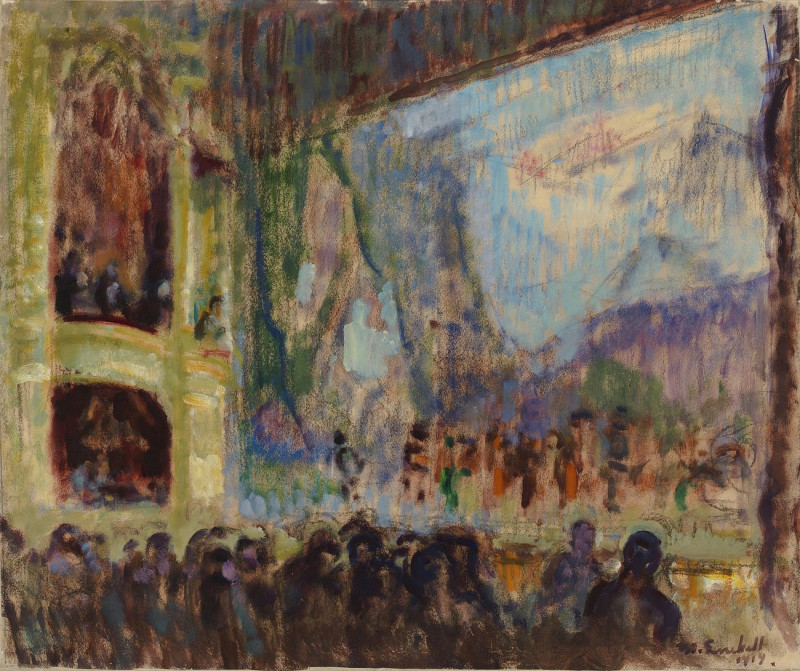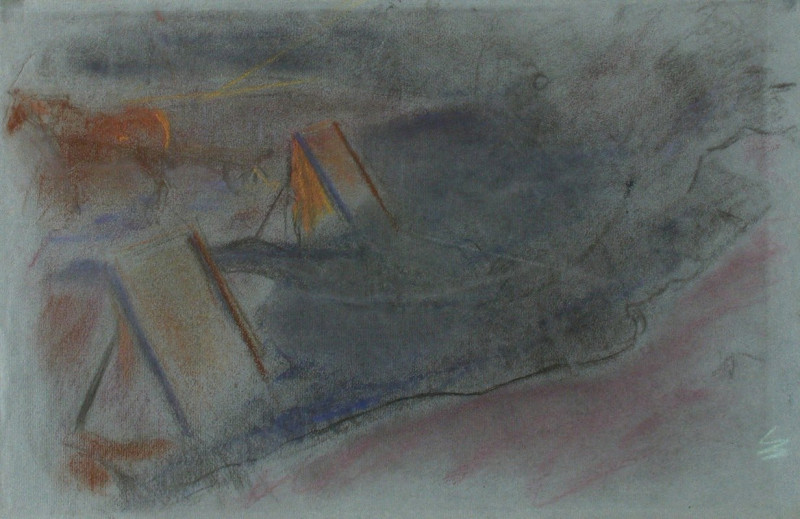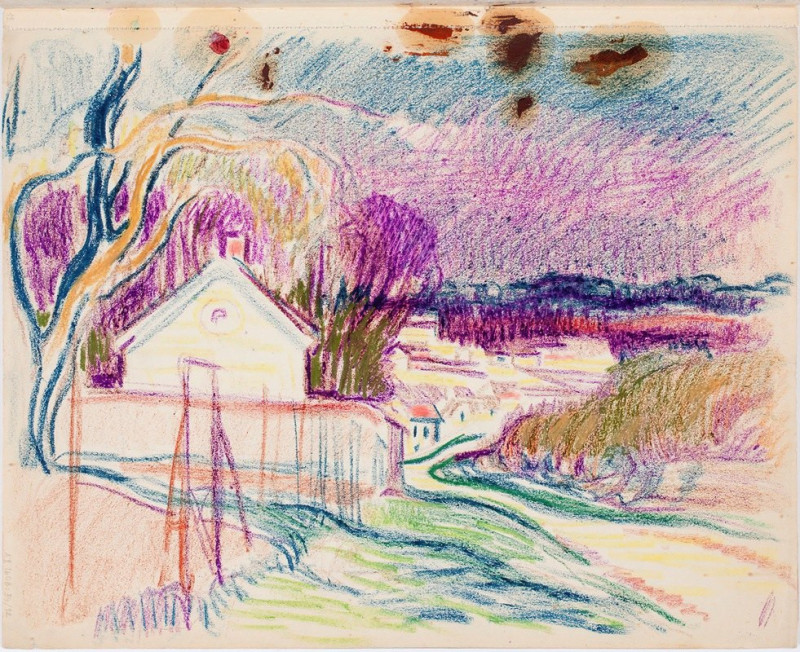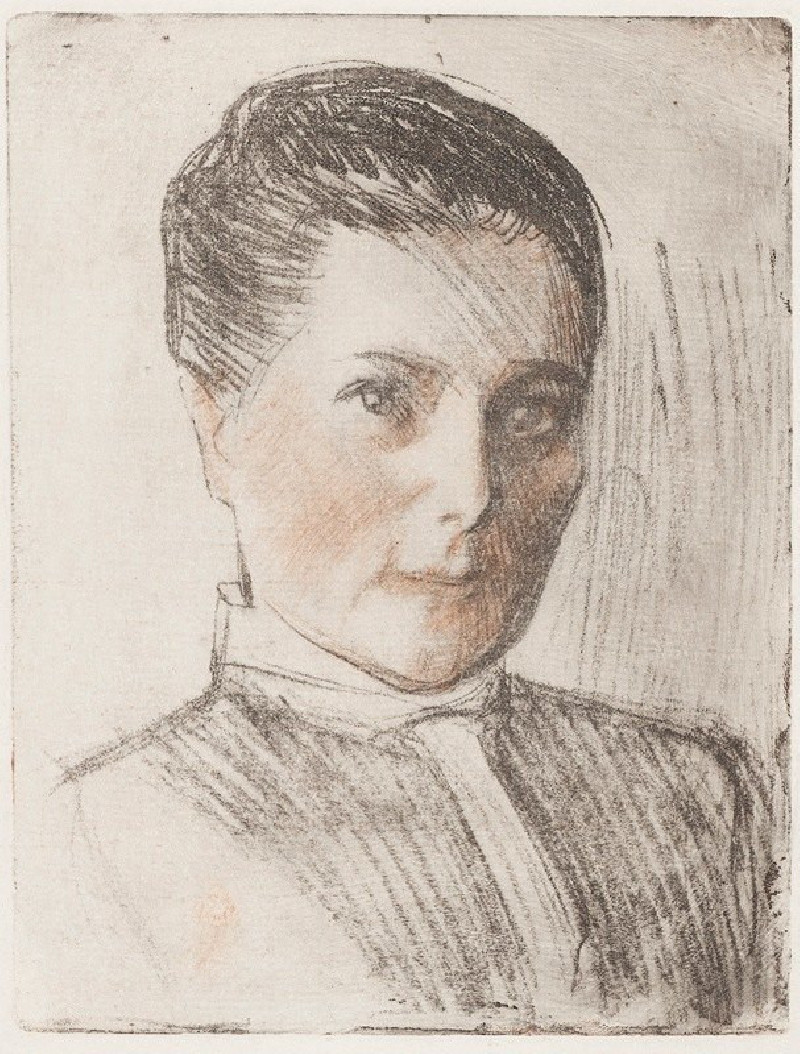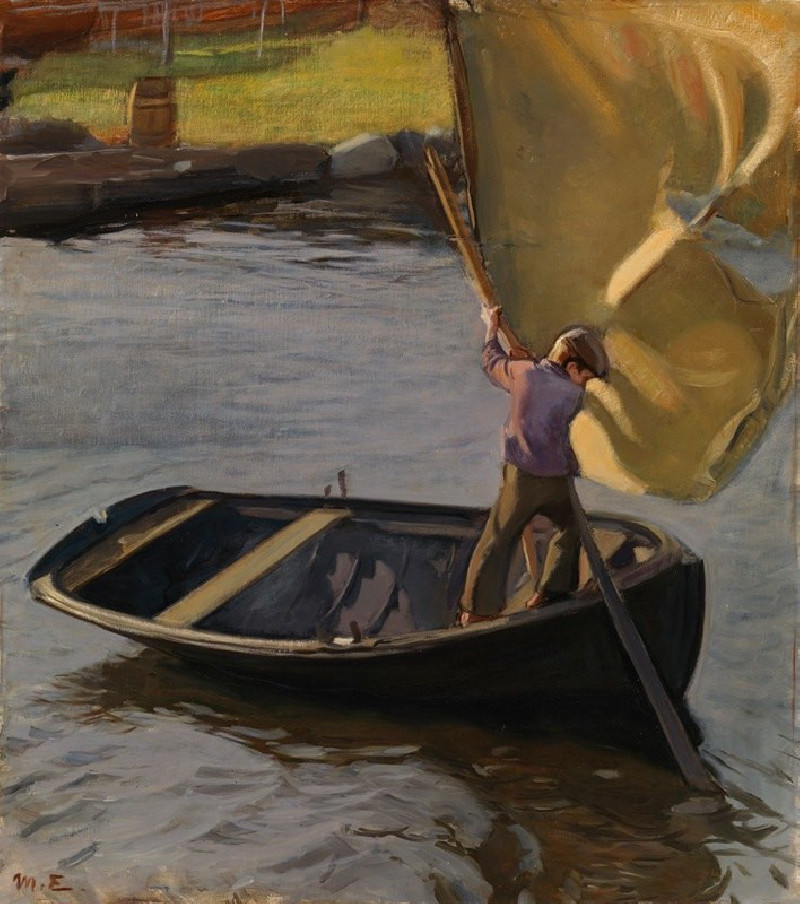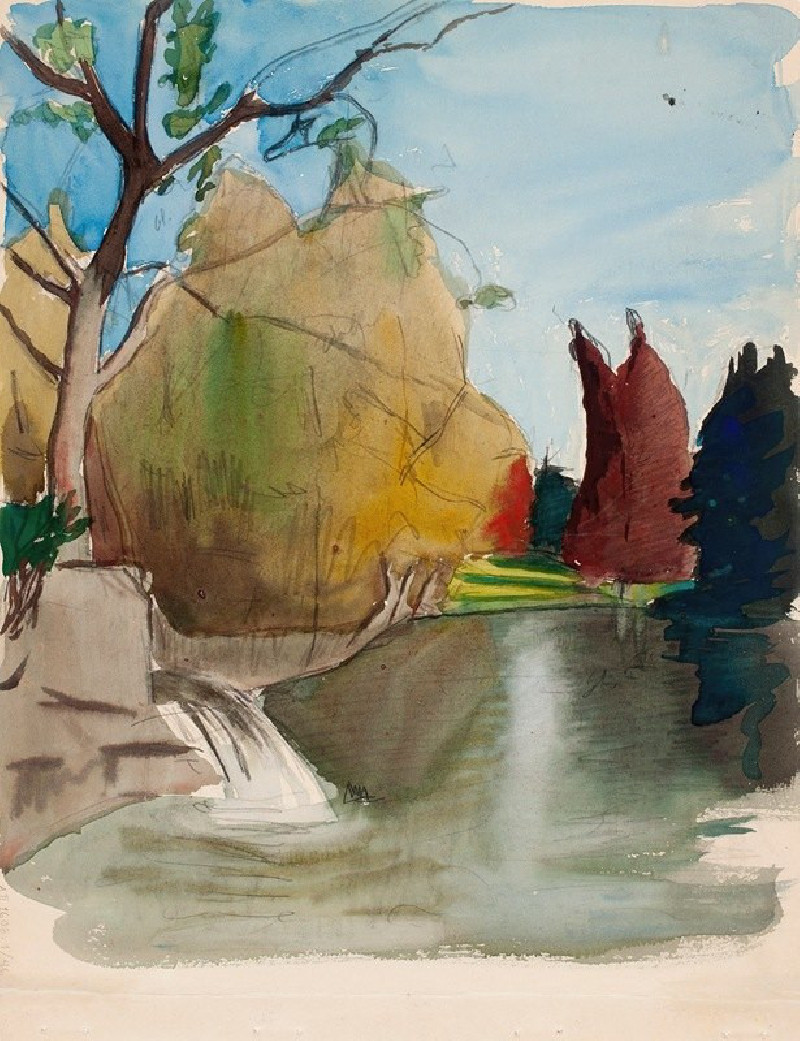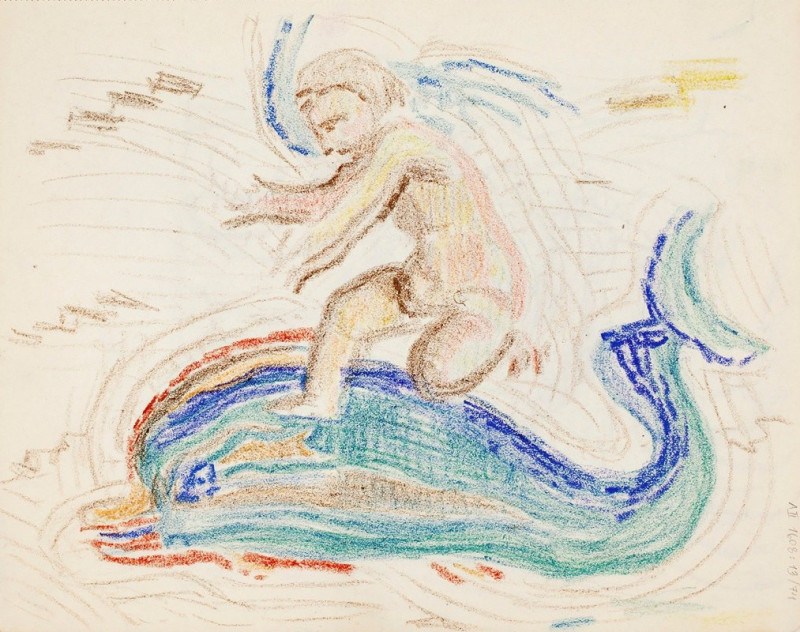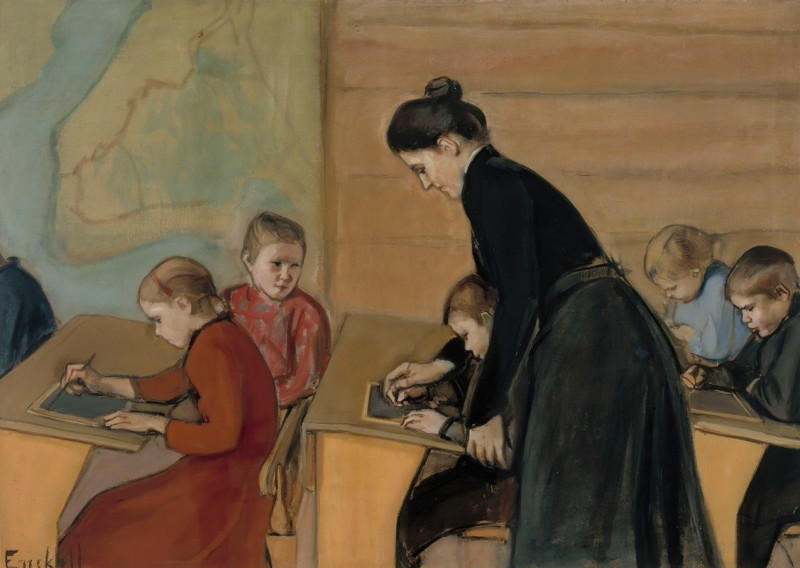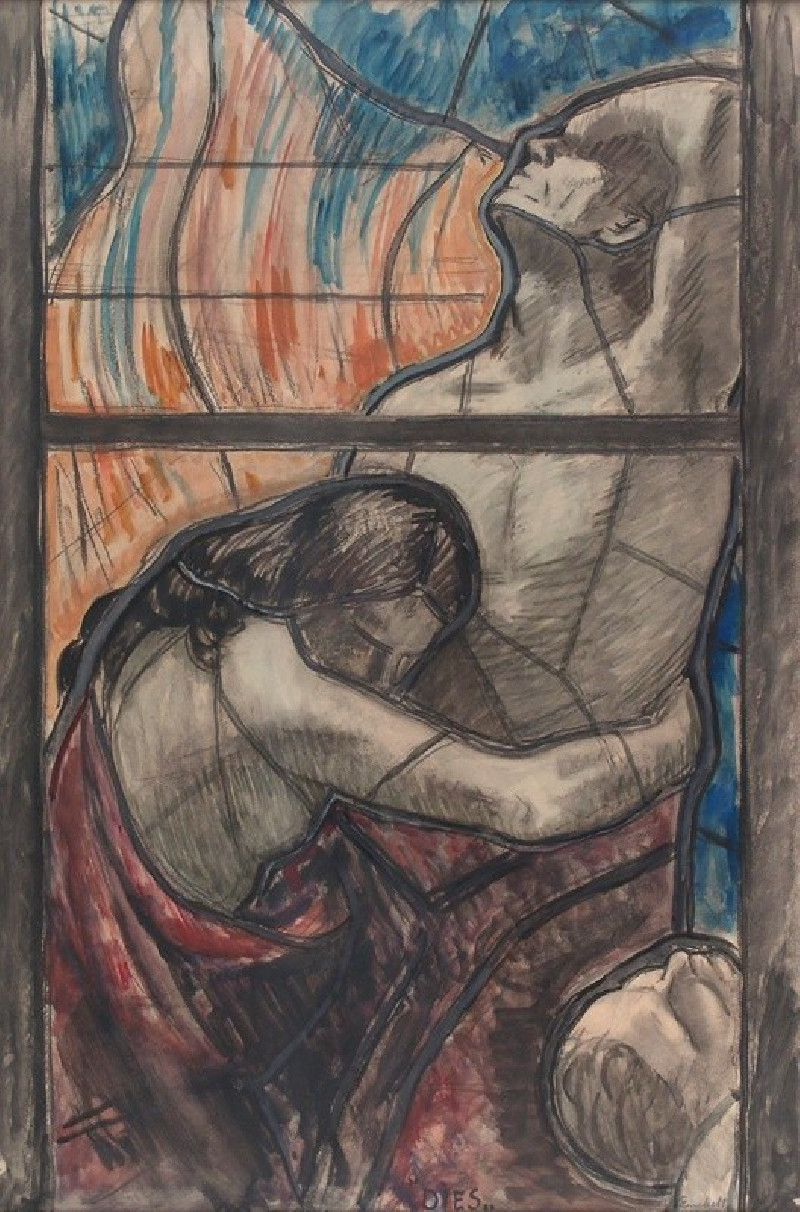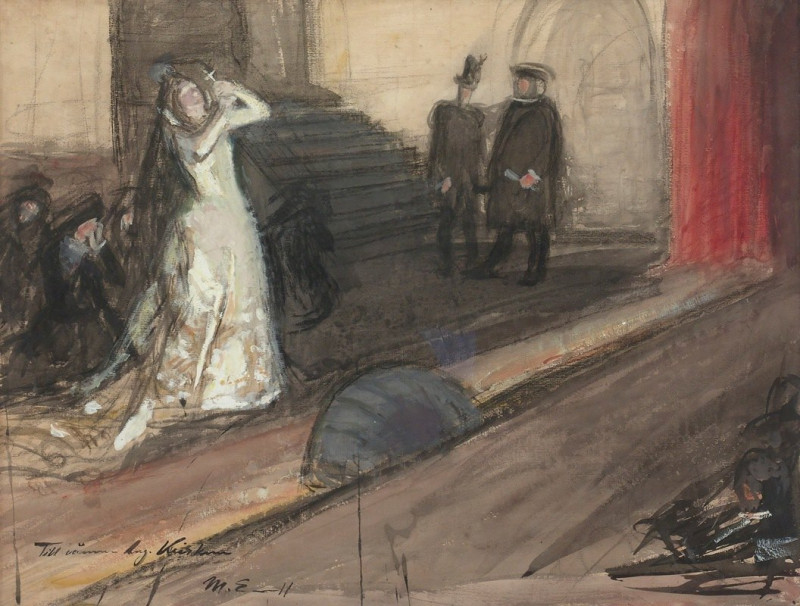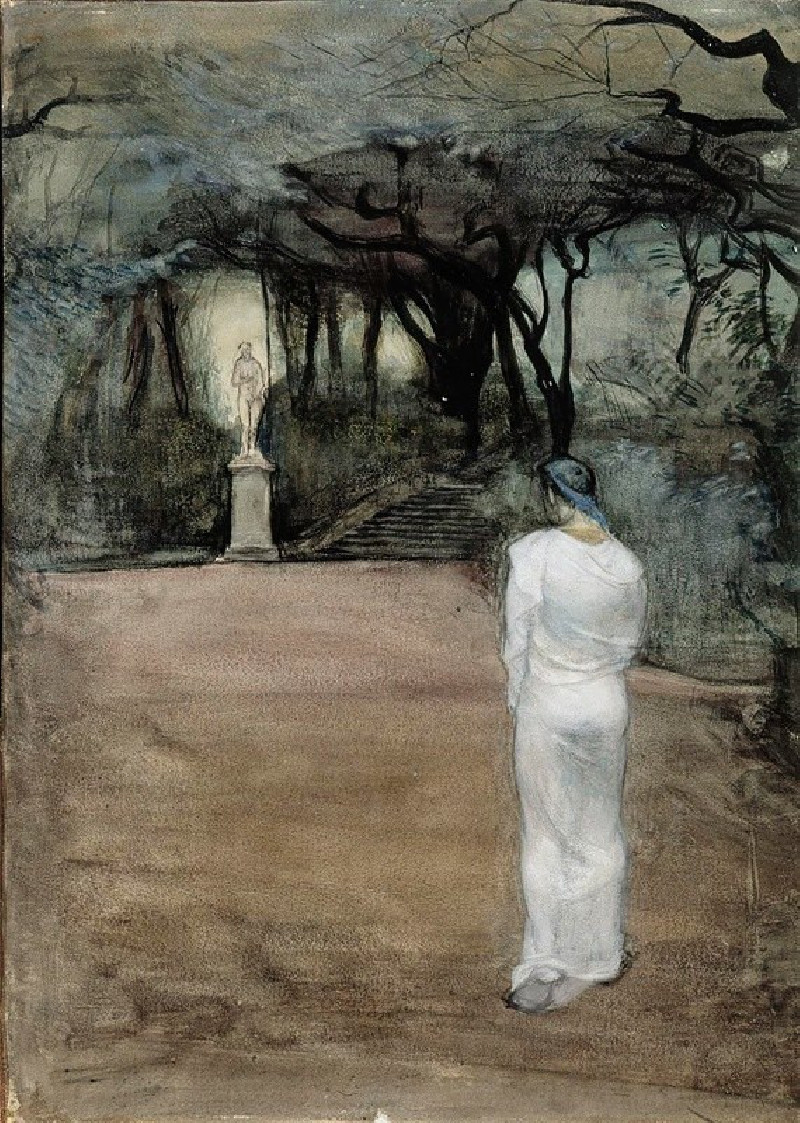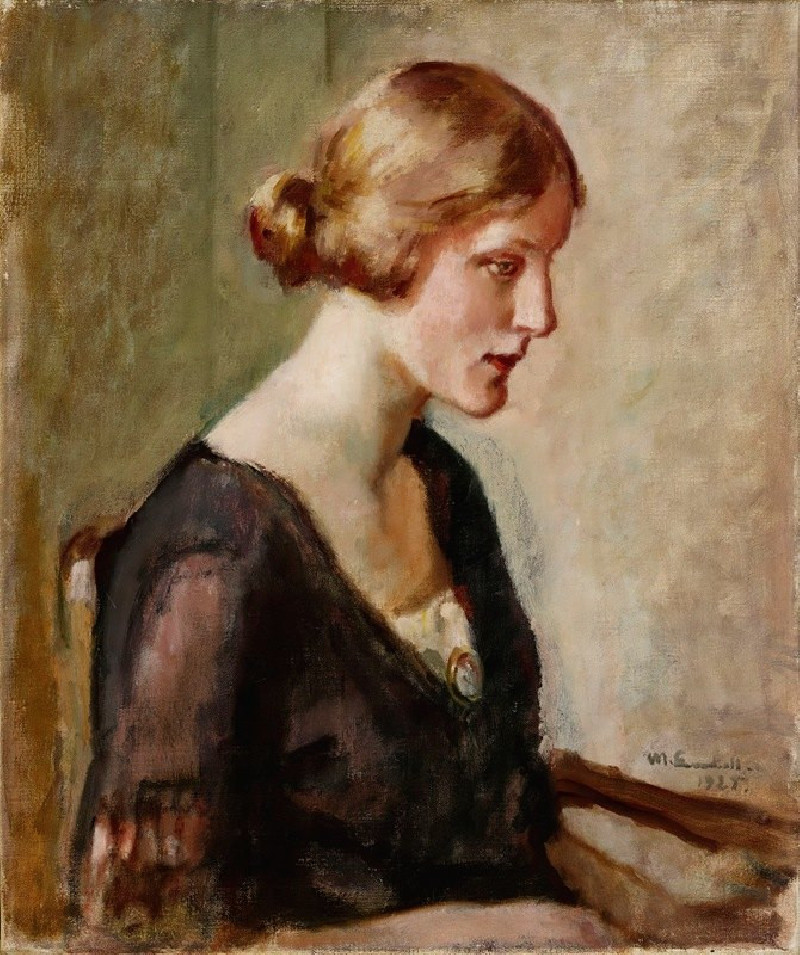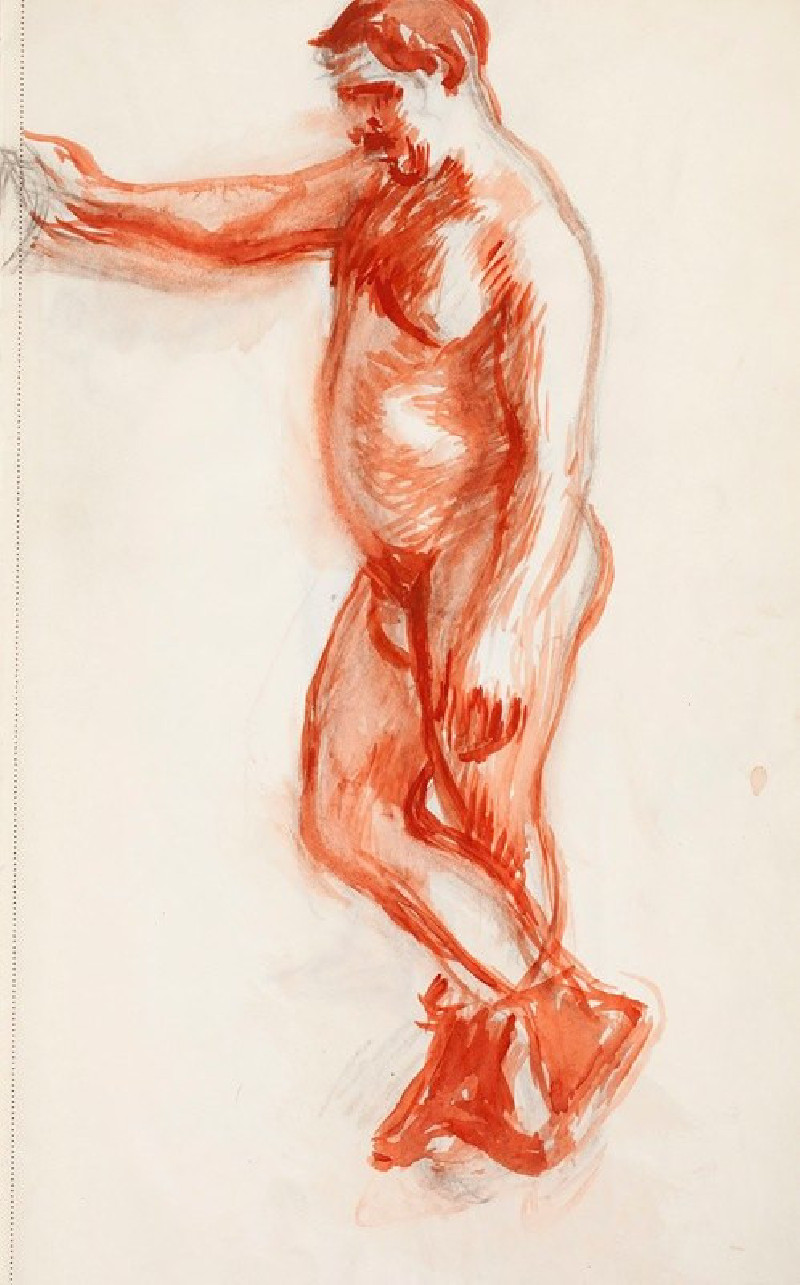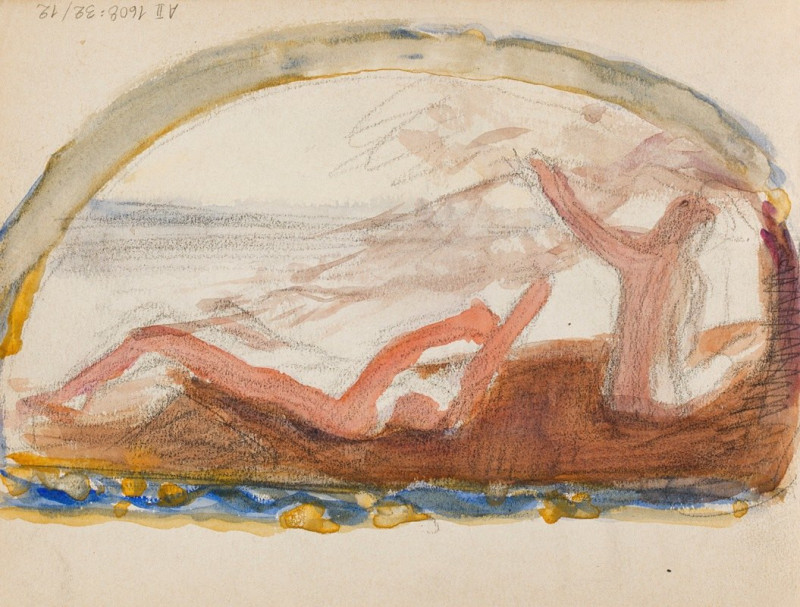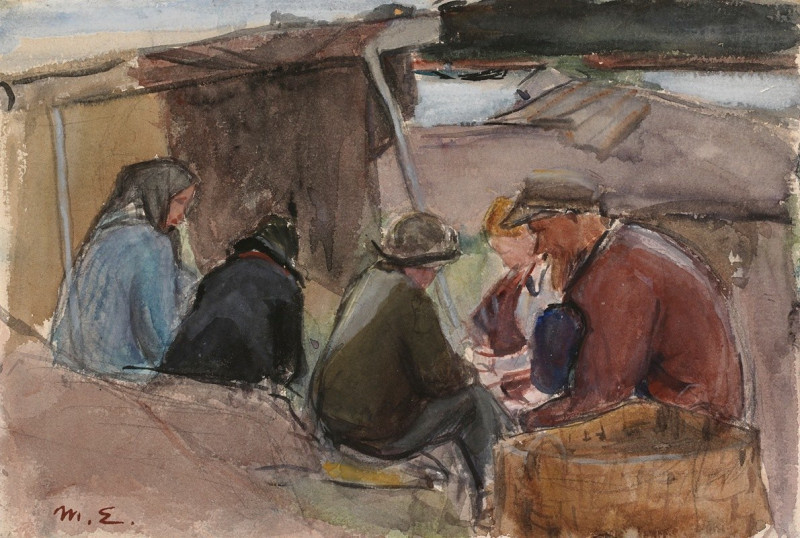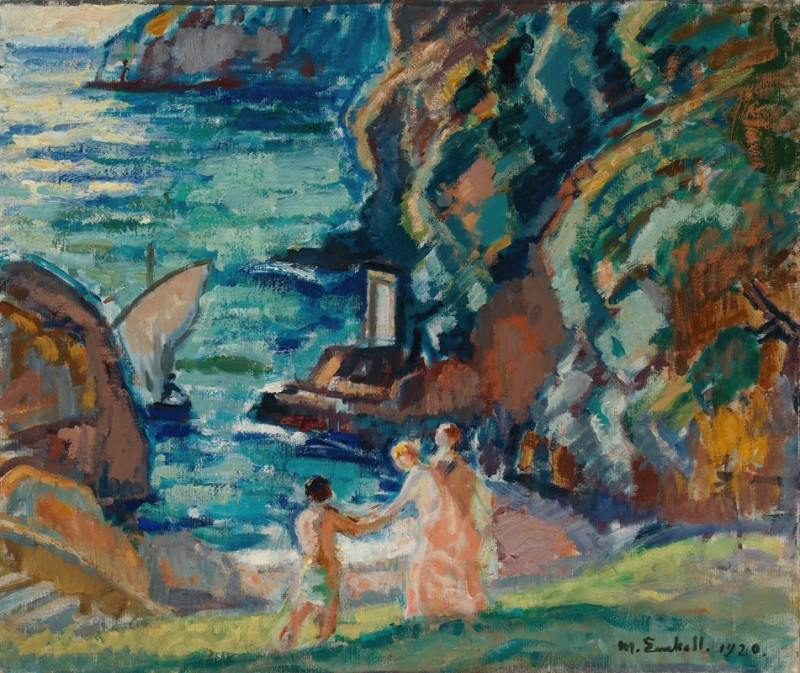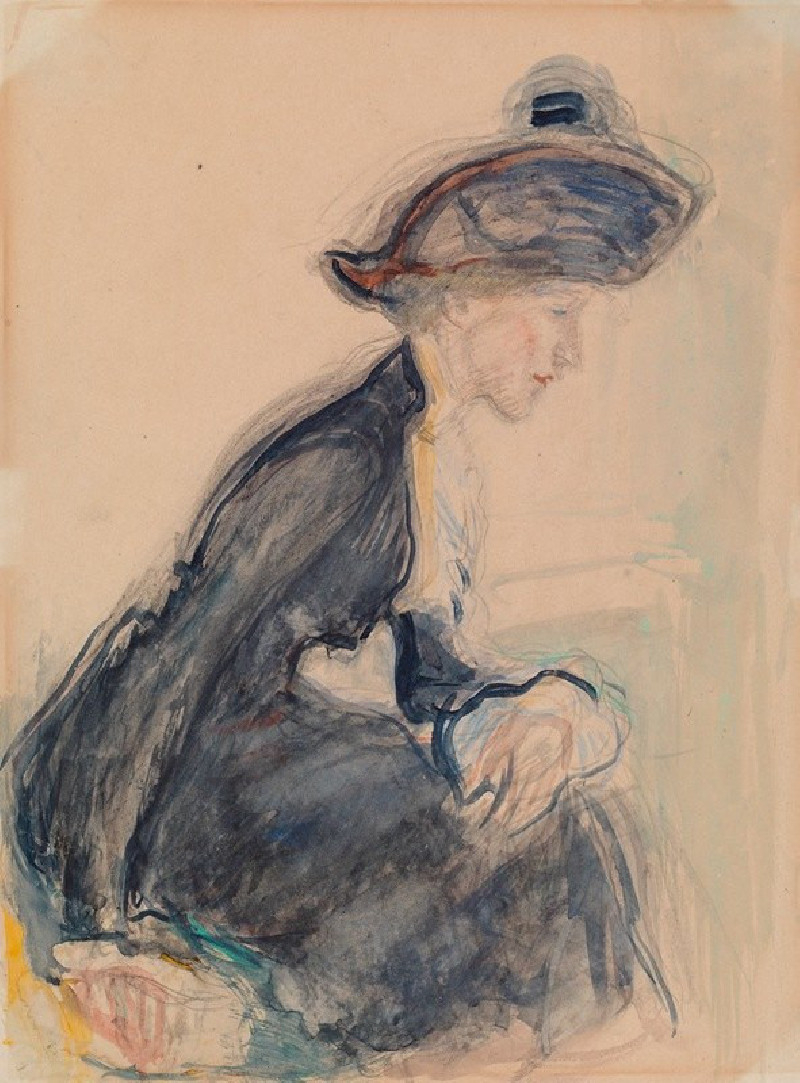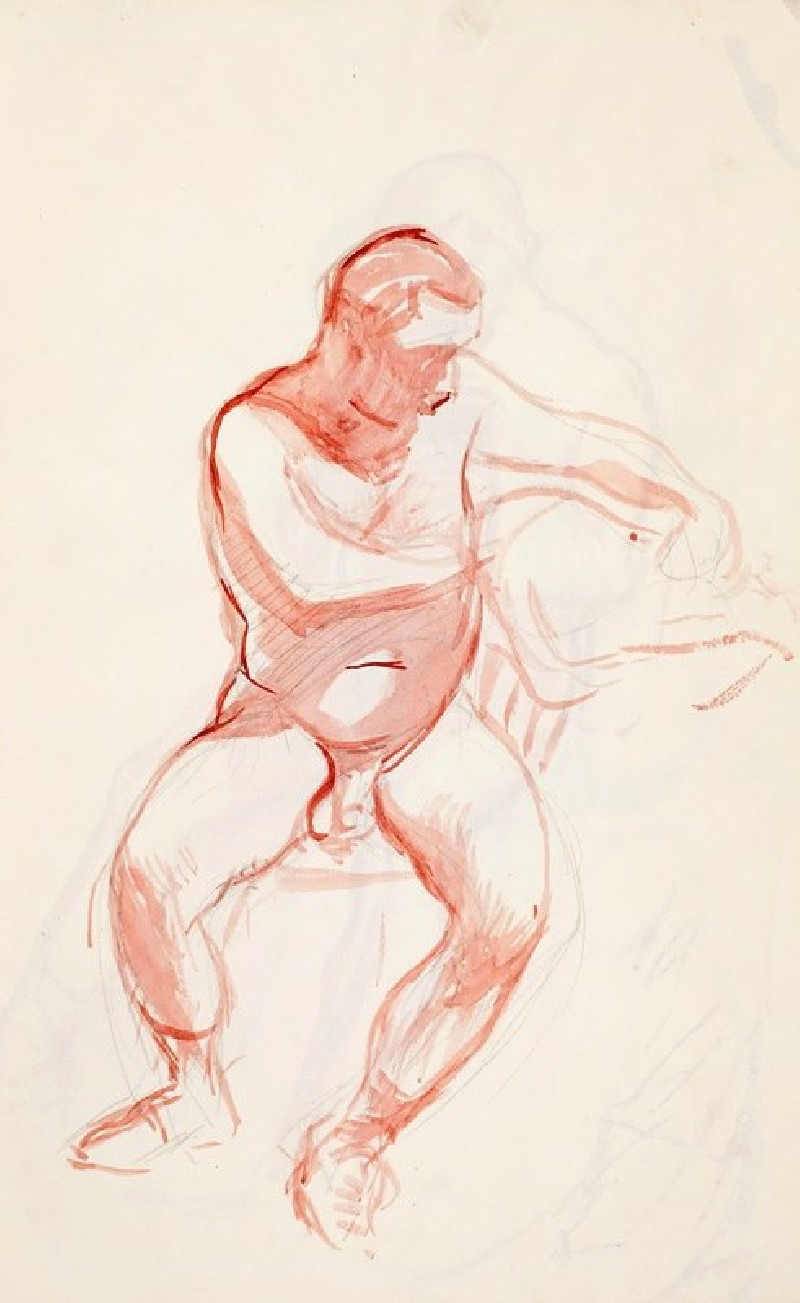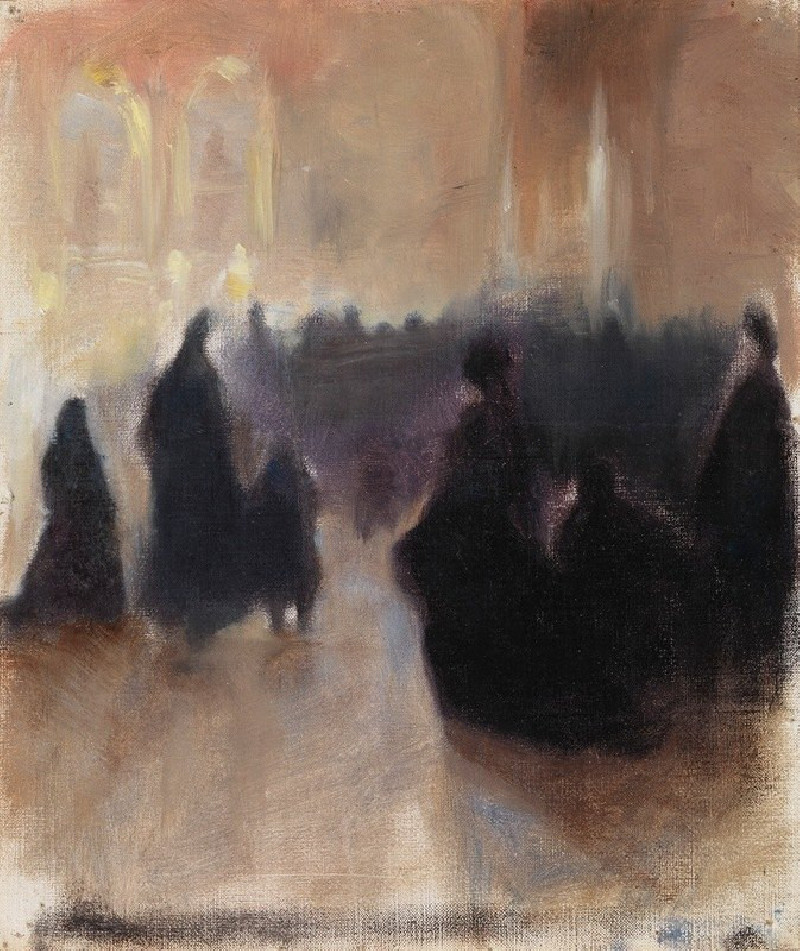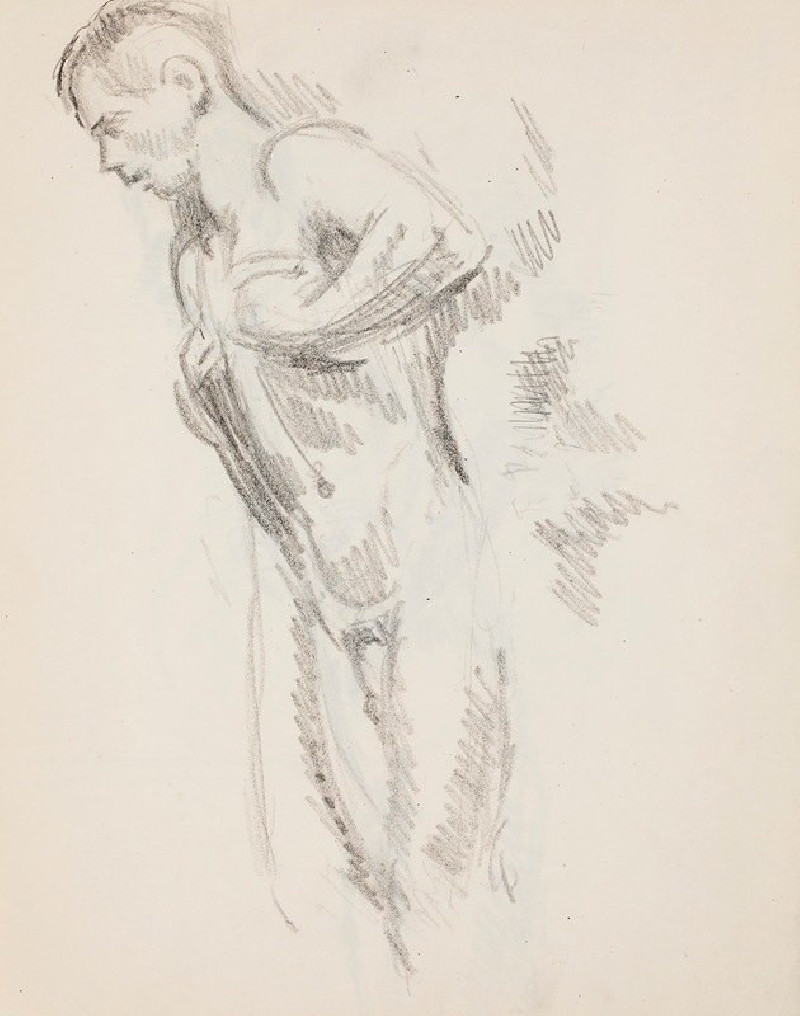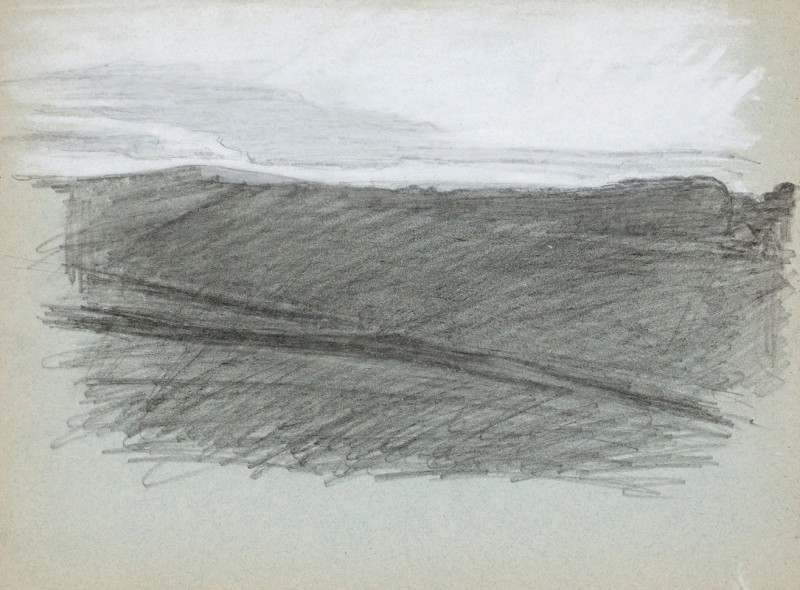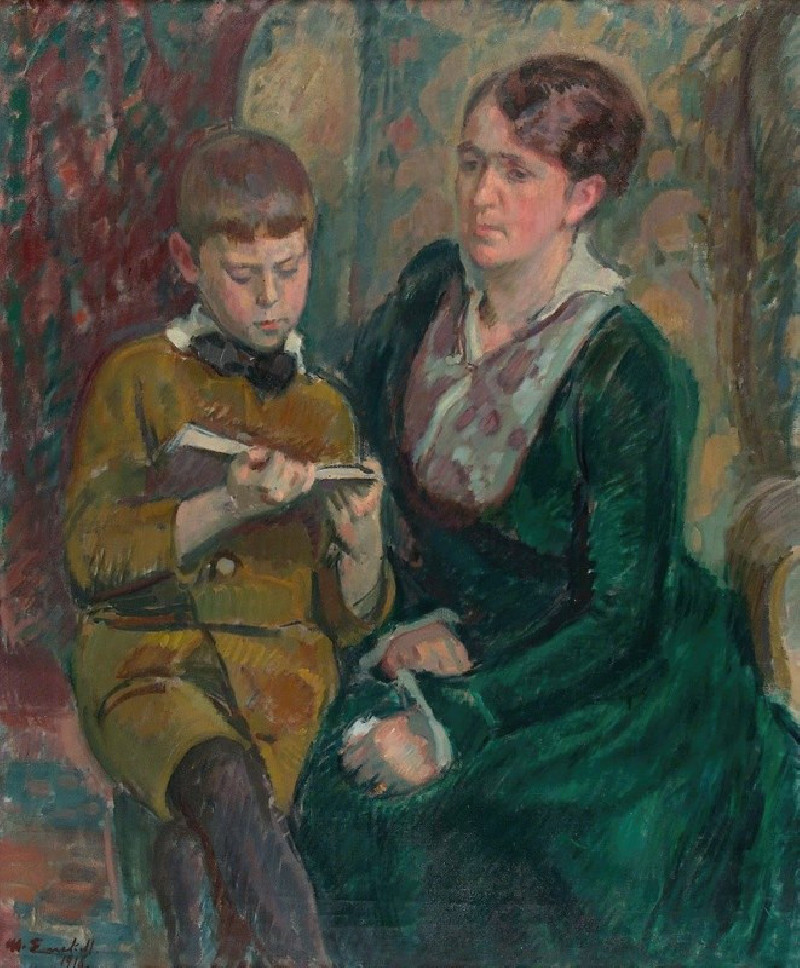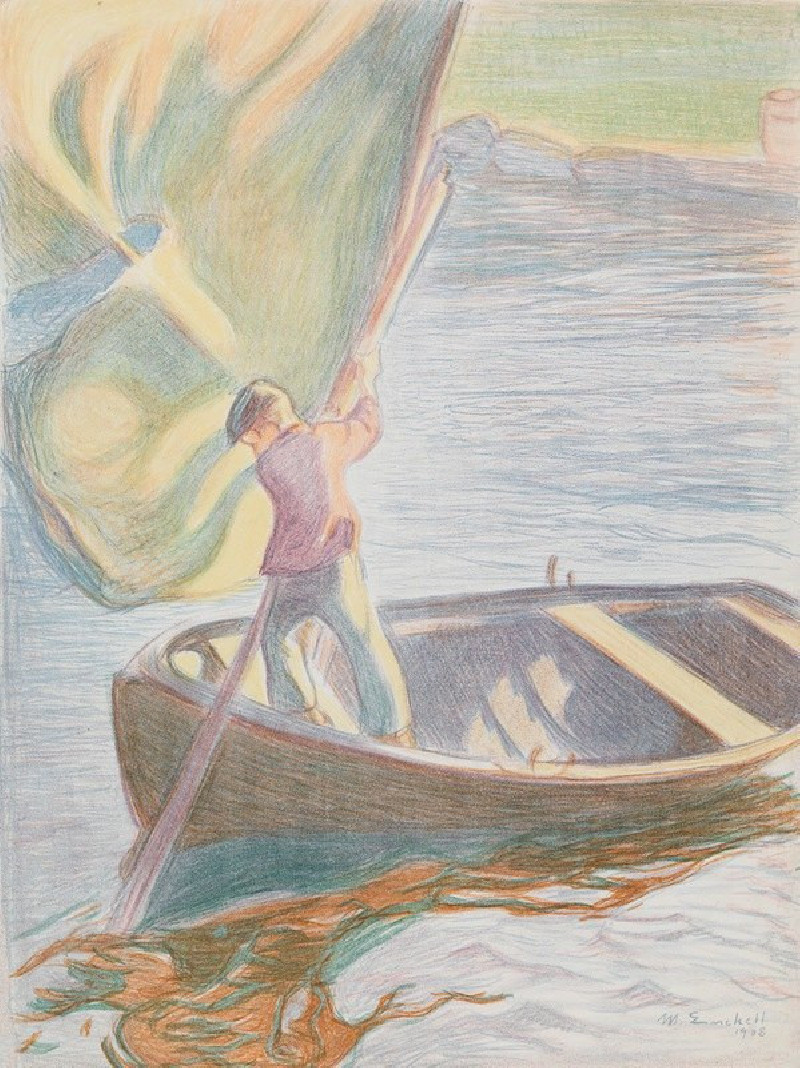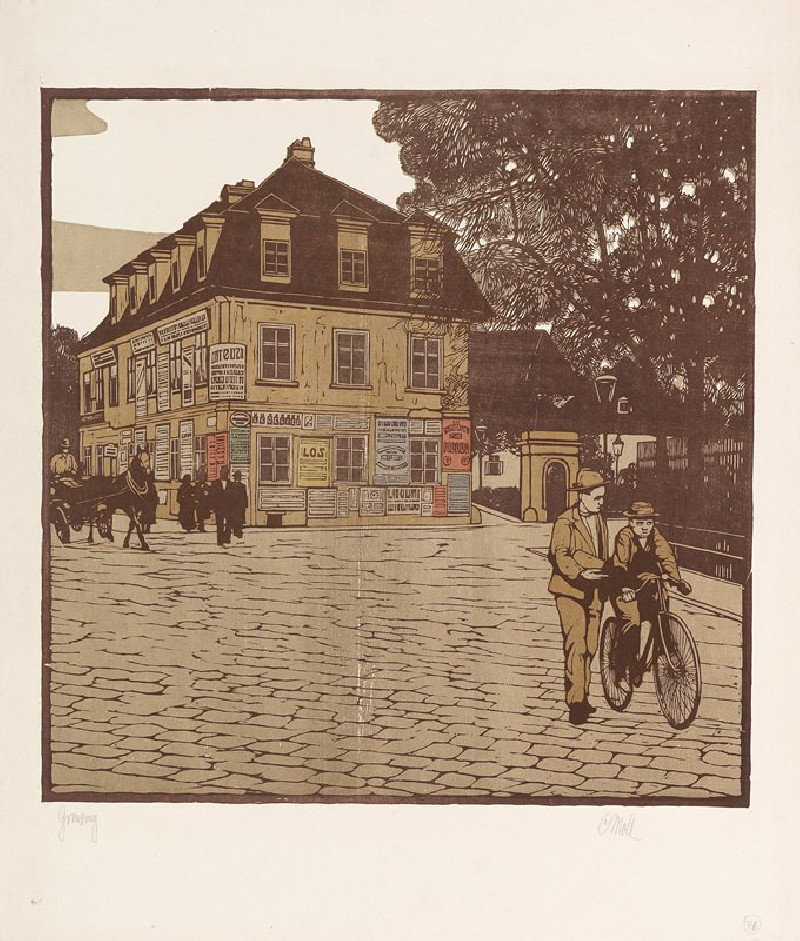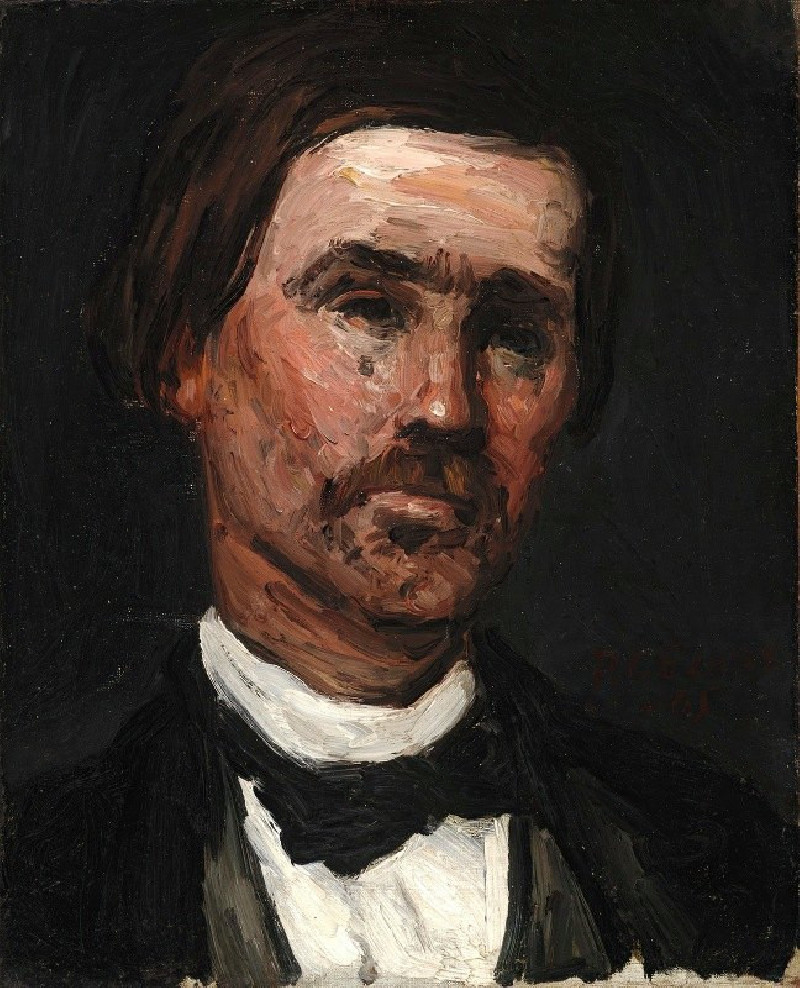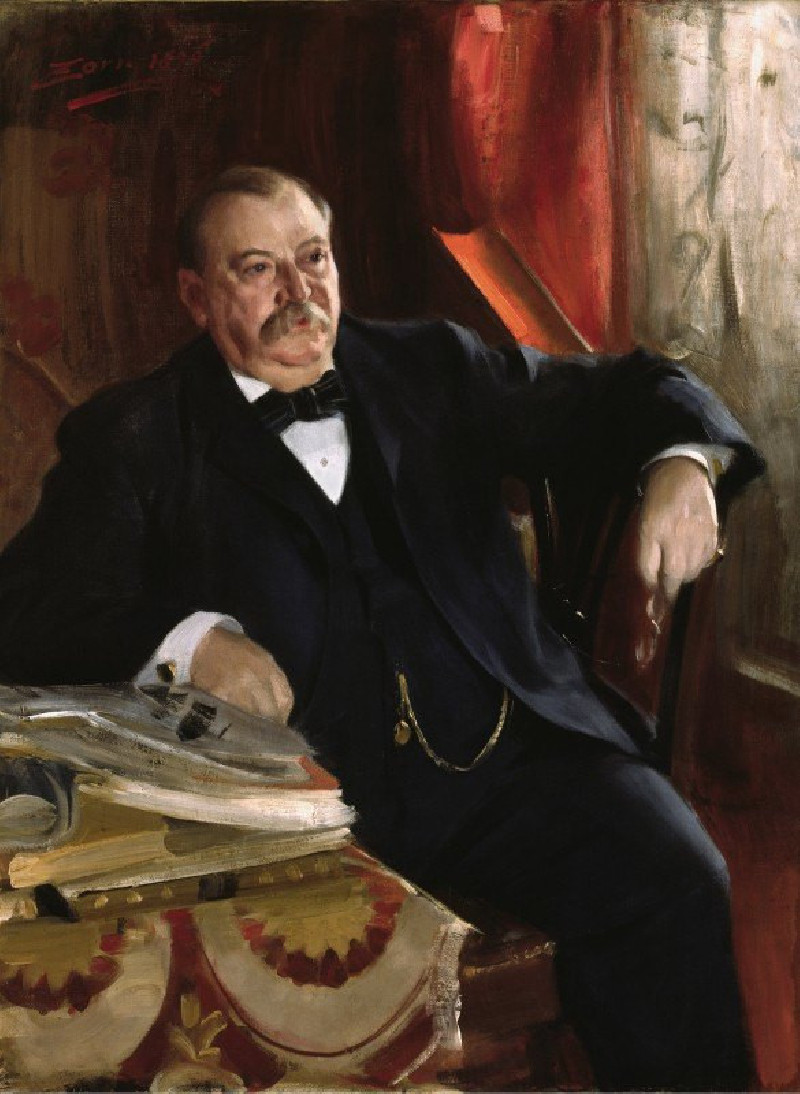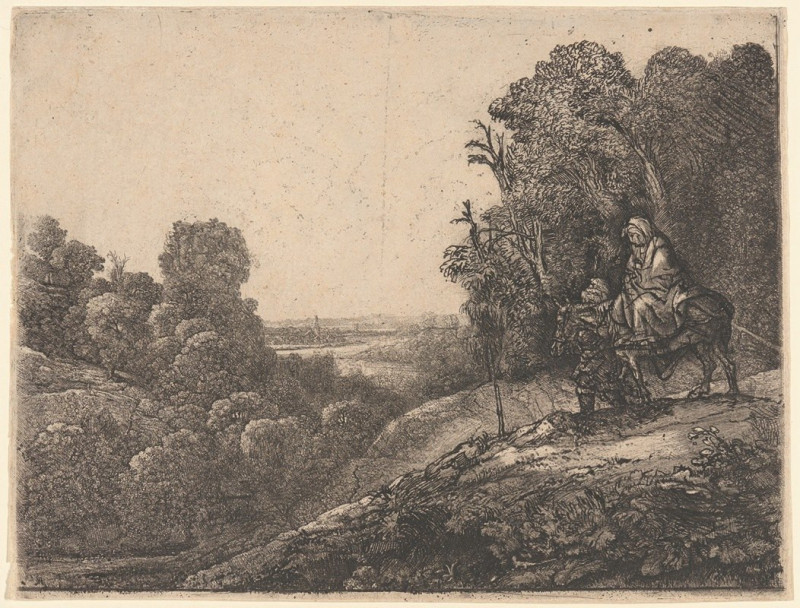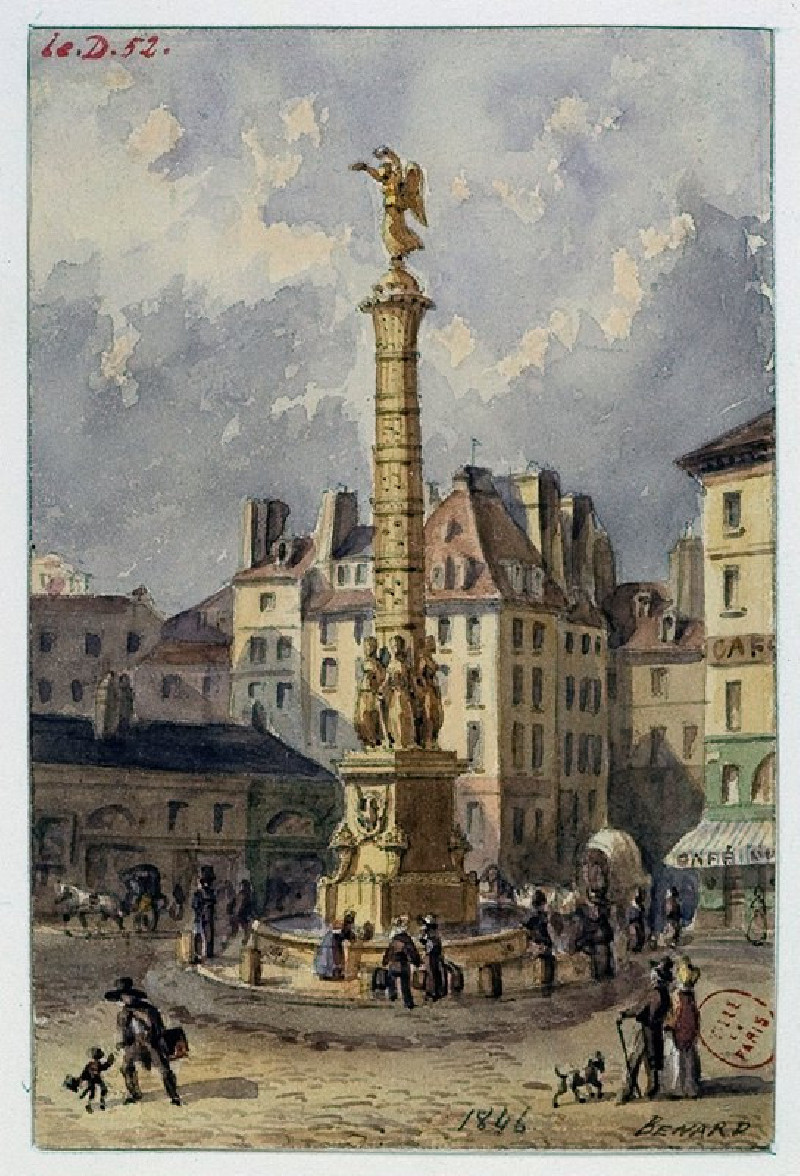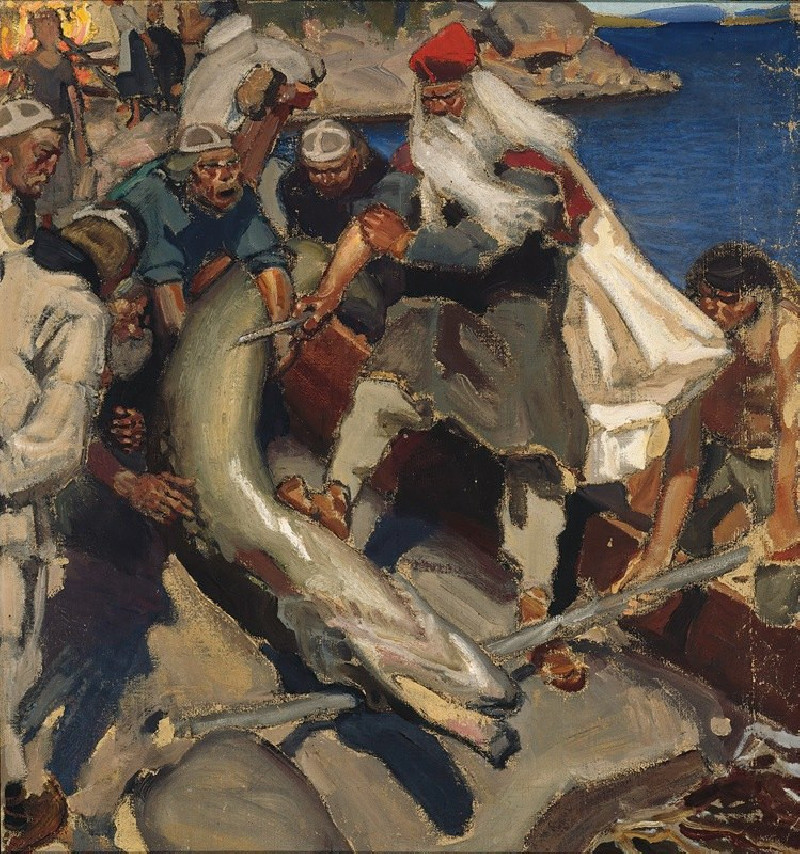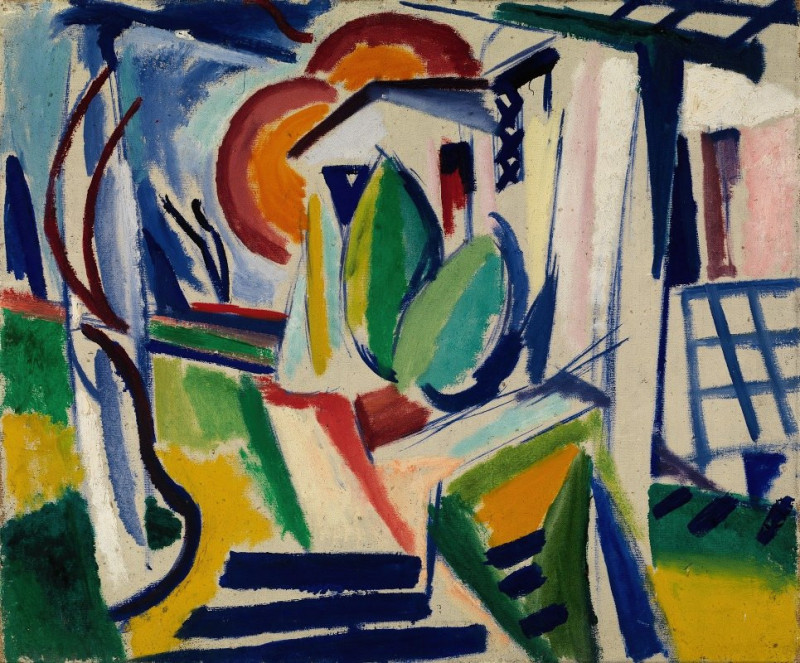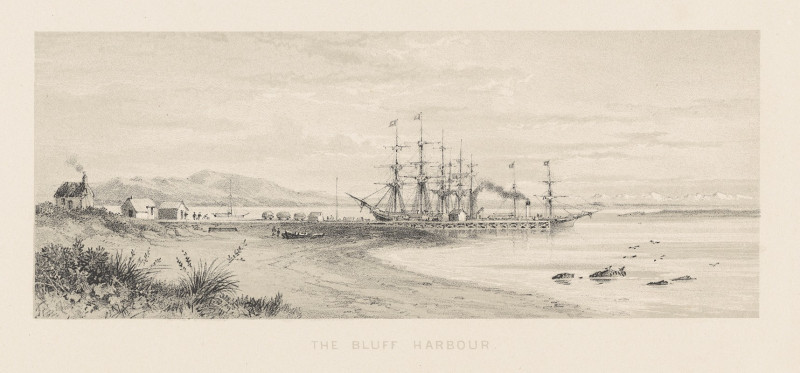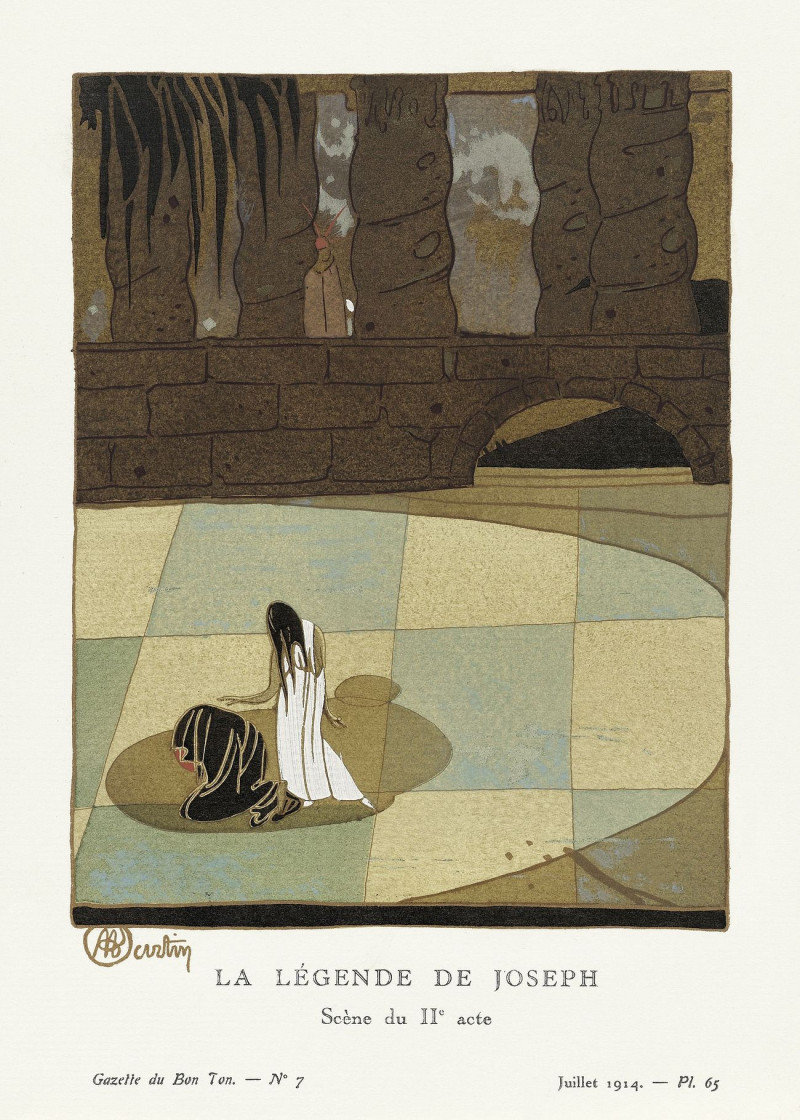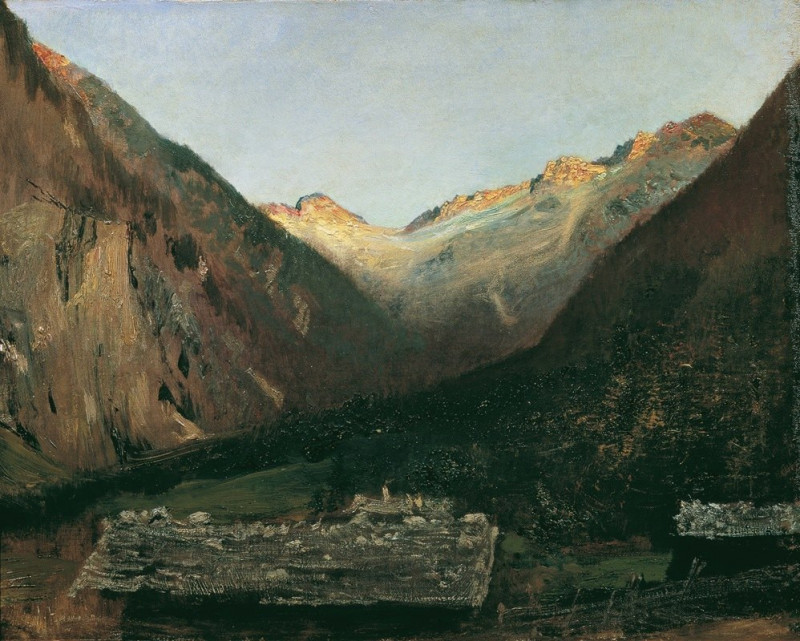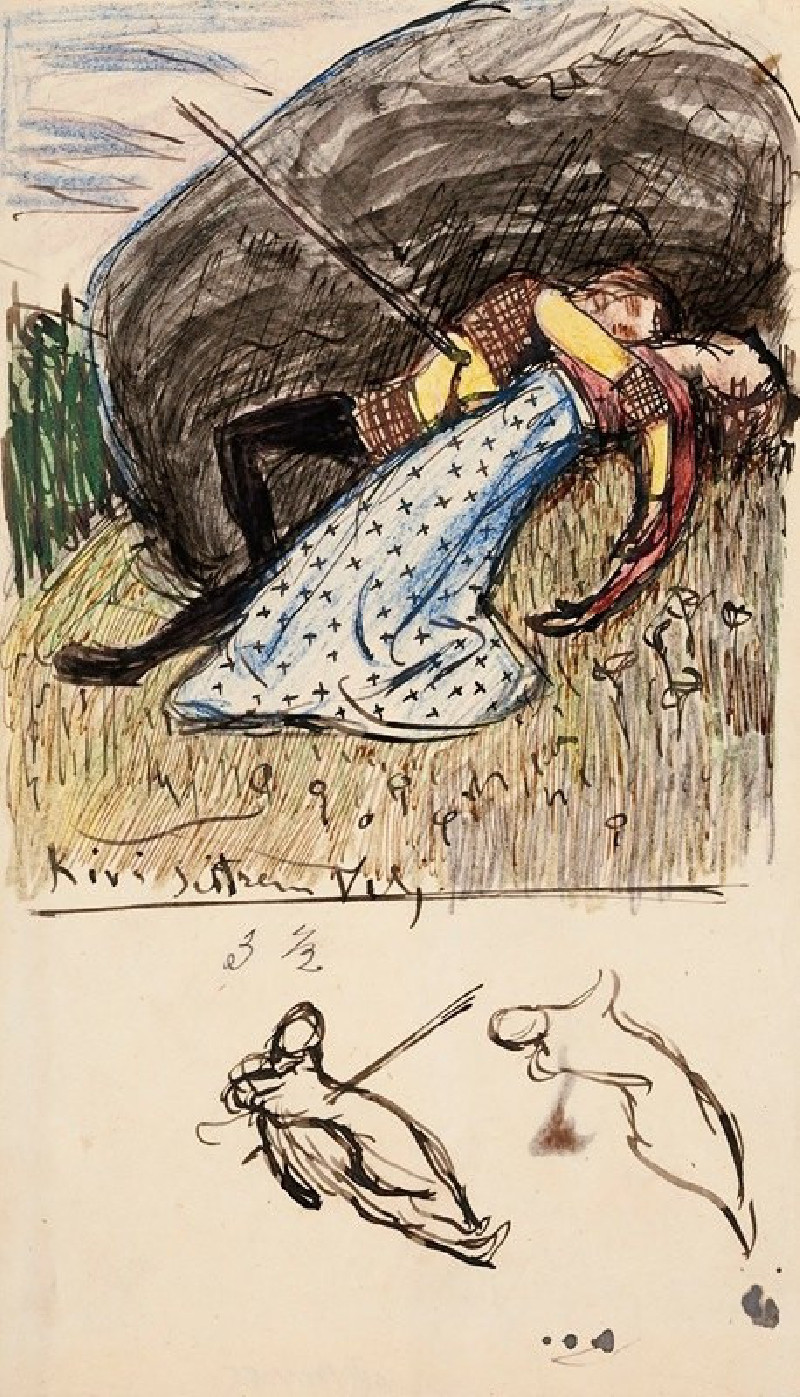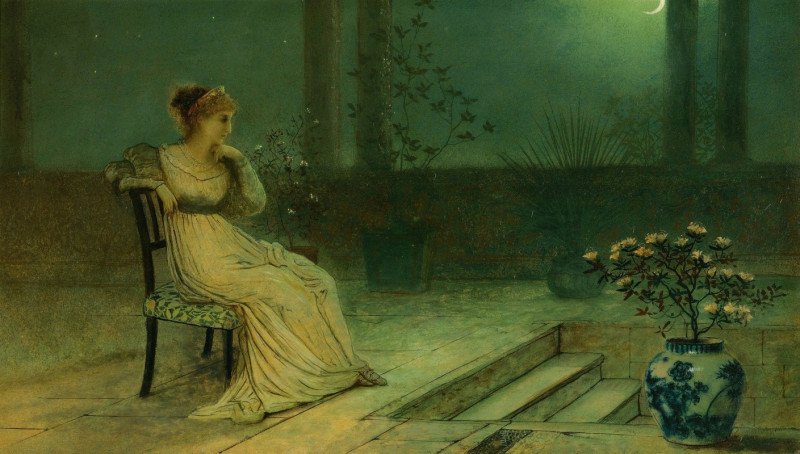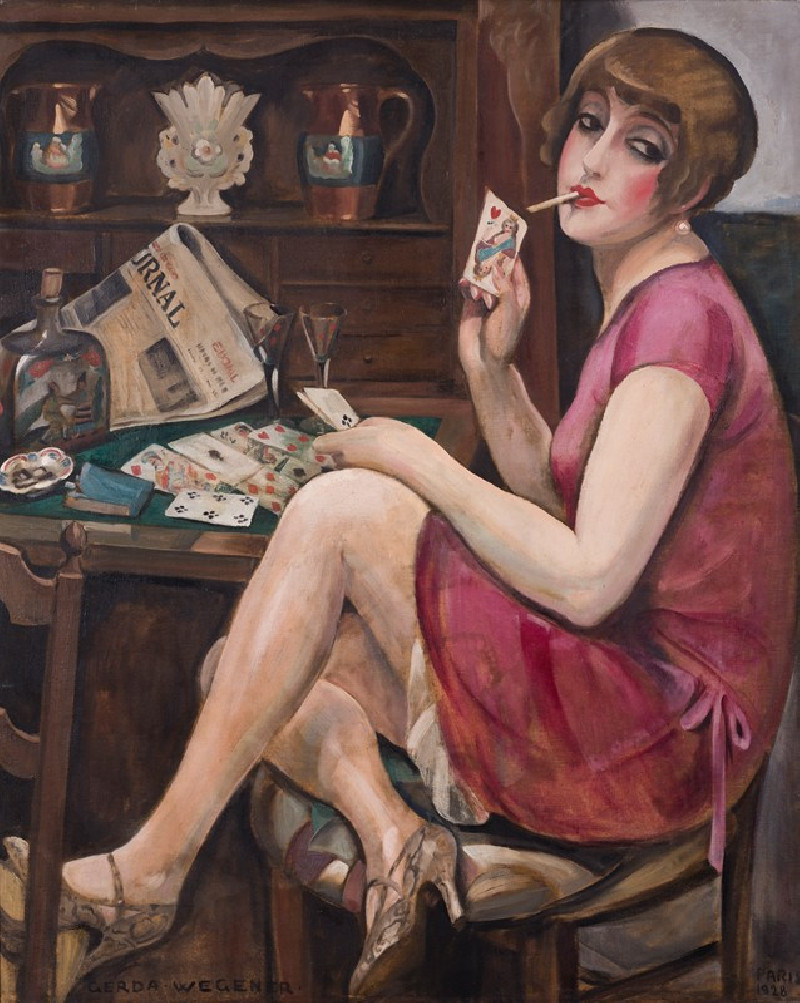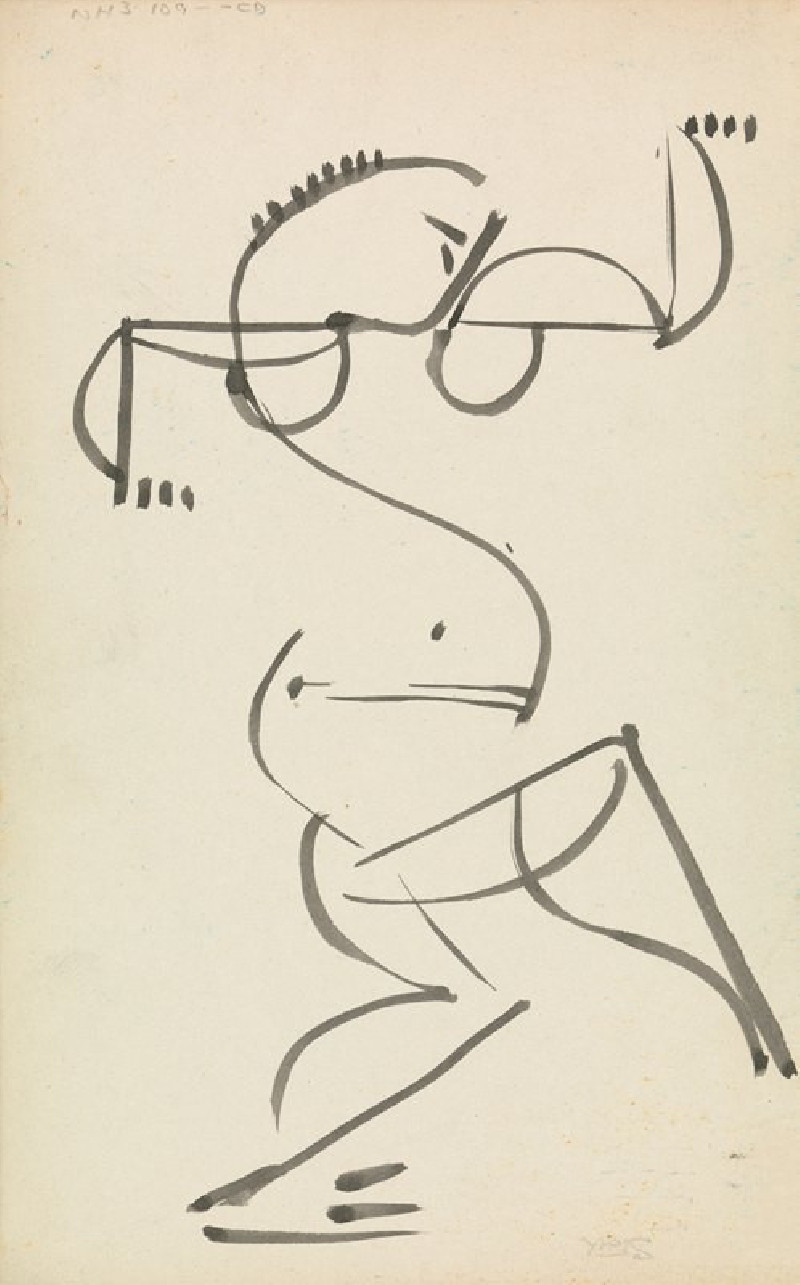Interior View Of The Finnish Opera, 1919,
Technique: Giclée quality print
Recommended by our customers
More about this artwork
The painting "Interior View Of The Finnish Opera, 1919" by Magnus Enckell encapsulates a vibrant and atmospheric portrayal of a live performance at the opera. This art piece is characterized by its dynamic brushstrokes and rich, impressionistic style that captures both the elegance and the transient nature of a theatrical experience.In the forefront of the scene, we see the audience, depicted as a sea of dark figures. These figures, mostly rendered in shadowy tones and strokes, lend a sense of anonymity and universality to the experience of attending the opera, emphasizing the collective engagement of the audience. The heads and shoulders of these figures are blended together, enhancing the feeling of a packed theater where individuality merges into a shared cultural moment.The central portion of the painting is dominated by the opulent architecture of the opera house. Bold arches and intricate architectural details are suggested rather than fully defined, utilizing light and dark contrasts that convey the grandeur and the classic design typical of early 20th-century opera houses. These elements are depicted with a blend of greens, creams, and darker shades which aid in illustrating the opulent, yet dimly lit, interior ambiance.On the stage, the performance is alive with movement and color, though rendered in an abstract form that captures the essence rather than the details of the scene. The stage appears illuminated, painted in lighter and more vivid colors compared to the rest of the composition, drawing viewers’ eyes directly to the heart of the artistic activity.
Delivery
Returns
Magnus Enckell (1870-1925) was a Finnish painter and graphic artist who was born in Helsinki. He studied at the Ateneum School of Art and later at the Académie Julian in Paris. Enckell was greatly influenced by the Symbolist and Art Nouveau movements, and his work often featured moody and dreamlike landscapes and portraits. He was one of the leading figures of Finnish art in the early 20th century, and his work helped to shape the development of modernist art in Finland. He passed away in 1925 at the age of 55, leaving behind a legacy that continues to inspire artists to this day.

